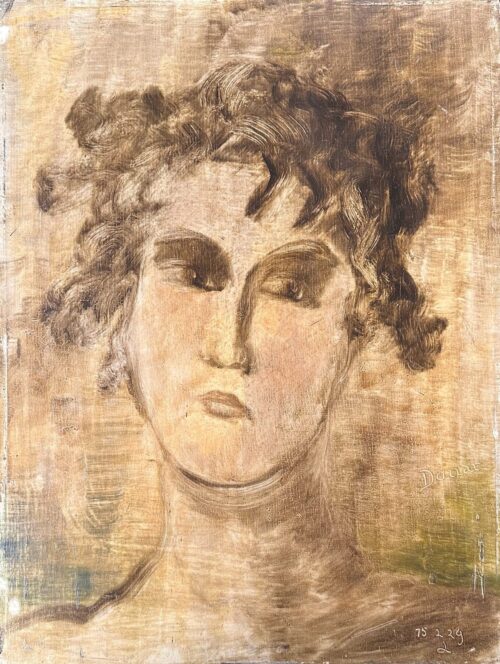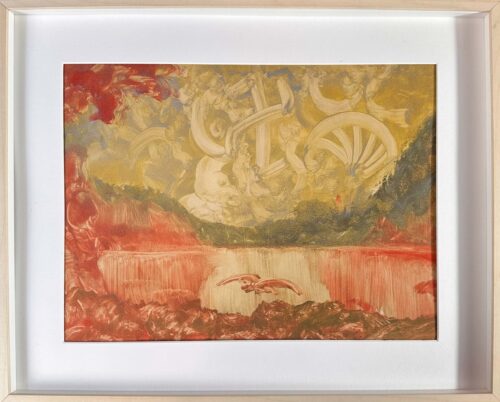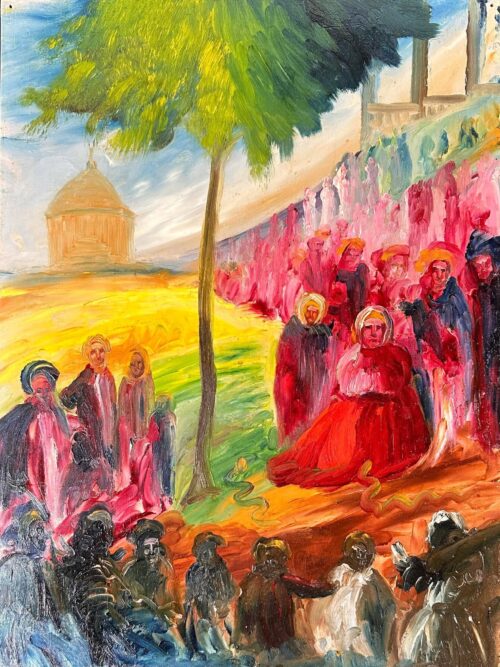Nüsslein Heinrich
Nüsslein Heinrich



Heinrich Nüsslein (1879 – 1947) grandit dans une famille de la petite bourgeoisie allemande. Après une formation de typographe et de relieur il entre à l’École Nationale d’Art de Nuremberg, mais n’y reste qu’un an à cause d’une très mauvaise vue. Il devient un temps photographe puis en 1913 travaille à Nuremberg chez des antiquaires. Dans les années vingt il commence son propre travail artistique, imprégné de spiritisme et de sciences ésotériques. Son œuvre est d’inspiration mythologique et religieuse ; il se décrit comme un « peintre psychique et un écrivain métaphysique ». Son style suit le chemin que lui dictent ses transes, « Je ne peins pas, mais ça peint », affirmait-il. Il exécute ses œuvres le plus souvent les yeux fermés ou dans l’obscurité en un temps très court, entre une à quinze minutes, mêlant la virtuosité du coup de pinceau et les essuyages à l’aide d’un chiffon.
Exposé à Londres et aux Etats Unis, il connaît une certaine notoriété avec une production considérable ; sur les 20 000 œuvres approximativement dénombrées la plupart ont disparu, confisquées et détruites pendant la période nazi ; aujourd’hui il n’en reste que quelques centaines.
Heinrich Nüsslein (1879 – 1947) grew up in a middle-class German family. After training as a typesetter and bookbinder, he enrolled at the National Art School in Nuremberg, but only stayed for a year due to poor eyesight. He became a photographer for a time, and in 1913 worked in an antique shop in Nuremberg. In the 1920s he began his own artistic work, steeped in spiritualism and esoteric science. His work was inspired by mythology and religion; he described himself as a “psychic painter and metaphysical writer”. His style follows the path dictated by his trances: “I don’t paint, but it paints”, he used to say. He usually paints with his eyes closed or in the dark, in a very short space of time, between one and fifteen minutes, combining virtuoso brushstrokes and wiping with a cloth.
Exhibited in London and the United States, he achieved a certain notoriety with a considerable output; of the approximately 20,000 works counted, most disappeared, confiscated and destroyed during the Nazi period; today only a few hundred remain.